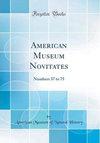精子束:蝎子精子包的结构多样性揭示了古代谱系中受精的进化
IF 1.1
3区 环境科学与生态学
Q3 BIODIVERSITY CONSERVATION
引用次数: 0
摘要
摘要蝎子的精子通常被捆绑在一起,形成一种精子结合,称为精子包。精子包可能在睾丸和精囊中发现,但在女性心房中消失,留下自由的精子。先前的研究基于有限的分类群,表明整个蝎目的精子包形态存在多样性。C.L.Koch,1850年。然而,大多数蝎子类群的精子包仍然未知。本研究首次对整个目的精子包形态进行了系统调查,涵盖了代表所有超家族级别的66属19科89个样本物种,并对Bothruridae Simon家族进行了更详细的调查,1880年。尽管所有典型的蝎子物种都表现出精子包,但Buthida Solehrade和Fet,2003,包括Chaerilidae Pocock,1893和大多数Buthidae C.L.Koch,1837,都表现出无组织的精子或松散组织的束。尽管细节各不相同,但在所有其他家庭中都可以识别出三种主要类型的精子包:单折叠;直的并多次折叠。亚型可以根据一般的形状和折叠模式来识别,主要是在多次折叠的精子包中。单折叠精子包是该顺序中最常见的类型。尽管大多数精子包没有覆盖物,但明显的分泌鞘可能是明显的,例如,在一些Chactidae Pocock中,1893年。精子包的长度从112-354µm不等,弯曲的精子包不一定比直精子包长。Bothruridae的四个示例物种表明,单个精子包内精子数量的变化与精子发生过程中产生的数量一致。精子包的多样性表明,从自由精子,通过弯曲的精子包,到其他形式。精子包可能有助于精子的运输、合作、竞争和存活。精子包的不同形态、功能和进化值得进一步研究。本文章由计算机程序翻译,如有差异,请以英文原文为准。
Bundles of Sperm: Structural Diversity in Scorpion Sperm Packages Illuminates Evolution of Insemination in an Ancient Lineage
ABSTRACT The spermatozoa of scorpions are often bundled together, forming a type of sperm conjugation known as a sperm package. Sperm packages may be found inside the testes and seminal vesicles but vanish in the female atrium, leaving free spermatozoa. Previous studies, based on a limited number of taxa, suggested a diversity of sperm package morphology across the order Scorpiones C.L. Koch, 1850. However, the sperm packages of most scorpion taxa remained unknown. The present study provides the first systematic survey of sperm package morphology across the order, covering 89 exemplar species in 66 genera and 19 families representing all suprafamilial ranks, with a more detailed investigation of the family Bothriuridae Simon, 1880. Whereas all exemplar species of scorpions exhibit sperm packages, Buthida Soleglad and Fet, 2003, including Chaerilidae Pocock, 1893, and most Buthidae C.L. Koch, 1837, present unorganized sperm or loosely organized bundles. Although the details vary, three main types of sperm packages may be recognized in all other families: single folded; straight; and multiple folded. Subtypes may be identified according to general shape and folding patterns, mainly among sperm packages that are folded multiple times. Single-folded sperm packages are the most common type observed in the order. Although most sperm packages lack a covering, a conspicuous secretion sheath may be evident, e.g., in some Chactidae Pocock, 1893. Sperm packages vary in length from 112–354 µm and bent sperm packages are not necessarily longer than straight sperm packages. Four exemplar species of Bothriuridae reveal that variation in sperm count within a single sperm package is consistent with the count derived in spermatogenesis. The diversity of sperm packages suggests a path from free spermatozoa, via bent sperm packages, to other forms. Sperm packages may aid in the transport, cooperation, competition, and survival of spermatozoa. The diverse morphology, function, and evolution of sperm packages merit further investigation.
求助全文
通过发布文献求助,成功后即可免费获取论文全文。
去求助
来源期刊

American Museum Novitates
环境科学-动物学
CiteScore
3.00
自引率
6.70%
发文量
8
审稿时长
>36 weeks
期刊介绍:
The Novitates (Latin for "new acquaintances"), published continuously and numbered consecutively since 1921, are short papers that contain descriptions of new forms and reports in zoology, paleontology, and geology.
 求助内容:
求助内容: 应助结果提醒方式:
应助结果提醒方式:


